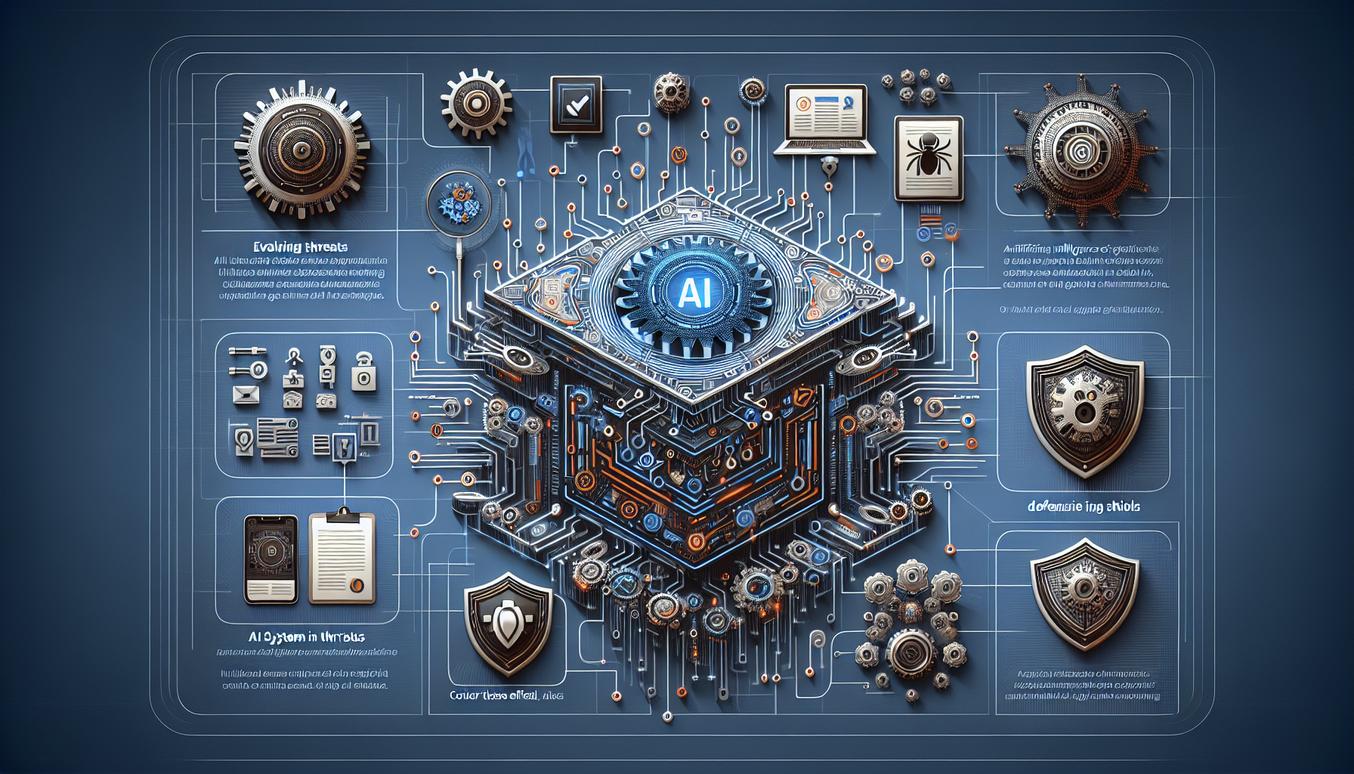Table of Contents
- Introduction – Rethinking AI Innovation
- Defining Modern AI Innovation
- Core Technologies Driving Momentum
- Designing Responsible and Explainable Solutions
- Integration Pathways for Existing Products
- Deployment Patterns for Scale and Reliability
- Measuring Value – Metrics and KPIs
- Implementation Spotlights with Tactical Blueprints
- Security Risks and Mitigation Strategies
- Roadmap: From Prototype to Autonomous Systems
- Conclusion – Practical Next Moves
- Appendix: Glossary and Further Reading
Introduction – Rethinking AI Innovation
Artificial Intelligence has moved beyond the realm of experimental research and into the core of strategic business operations. The conversation is no longer about *if* organizations should adopt AI, but *how* they can systematically harness it for sustained competitive advantage. True AI innovation is not about deploying isolated algorithms; it is a holistic discipline that combines cutting-edge technology, agile processes, and a forward-thinking organizational culture. This guide serves as a pragmatic blueprint for innovation managers, product leaders, and technical decision-makers looking to move from concept to impact. We will break down the essential components of modern AI innovation, offering actionable frameworks, governance checklists, and measurable KPIs to guide your journey.
Defining Modern AI Innovation
In today’s landscape, AI innovation refers to the strategic implementation of intelligent systems to create new value, optimize processes, and solve complex problems that were previously intractable. It transcends the mere development of a new model; it encompasses the entire lifecycle from data acquisition and ethical design to scalable deployment and continuous value measurement. This modern approach is built on three foundational pillars that must work in concert.
The Three Pillars of AI Innovation
- Technology: This includes the core algorithms, data infrastructure, and computational resources. It is the engine of AI innovation, powered by advancements in neural networks, generative models, and more.
- Process: This covers the methodologies for developing, deploying, and maintaining AI systems. It involves adopting MLOps (Machine Learning Operations), agile development cycles, and robust governance frameworks to ensure reliability and responsibility.
- People and Culture: This pillar focuses on fostering the skills, mindset, and collaborative environment necessary for success. It requires upskilling teams, promoting cross-functional collaboration between data scientists and business units, and championing a culture of data-driven experimentation.
Core Technologies Driving Momentum
A successful AI innovation strategy is built upon a solid understanding of the technologies that provide the most significant leverage. While the field is vast, three categories of technology currently form the backbone of most transformative AI applications.
Neural Networks and Deep Architectures
At the heart of modern AI are Neural Networks, particularly deep learning architectures. These systems, inspired by the human brain, excel at identifying complex patterns in large datasets. They are the driving force behind breakthroughs in image recognition, Natural Language Processing (NLP), and predictive analytics. Understanding their capabilities is fundamental to any serious AI innovation effort.
Generative Models and Creative Systems
Generative AI represents a major leap forward, enabling machines not just to analyze data but to create novel content. From generating realistic text and images to designing new molecules, these models are unlocking new frontiers in creativity, product design, and synthetic data generation, providing powerful tools for innovation leaders.
Reinforcement Learning in Operational Settings
Reinforcement Learning (RL) is a paradigm where an AI agent learns to make optimal decisions through trial and error to maximize a reward. In business, RL is being applied to solve dynamic optimization problems in real-time, such as managing supply chains, optimizing energy consumption, and personalizing user experiences in digital platforms.
Designing Responsible and Explainable Solutions
As AI systems become more autonomous and influential, the need for ethical guardrails is paramount. A commitment to Responsible AI is not just a compliance requirement; it is a prerequisite for building trust with users and stakeholders, forming a critical component of sustainable AI innovation.
Key Principles of Responsible AI
Effective AI governance is built on a foundation of clear principles. Your organization’s framework should address:
- Fairness: Proactively identifying and mitigating unwanted bias in datasets and models to ensure equitable outcomes.
- Accountability: Establishing clear lines of ownership and responsibility for the behavior of AI systems.
- Transparency and Explainability (XAI): Designing systems whose decision-making processes can be understood by humans, enabling debugging, auditing, and user trust.
Governance Checklist for AI Projects
Before deploying any AI model, your team should be able to answer these critical questions:
- Have we audited our training data for potential sources of bias?
- Is there a clear process for a human to review and override the AI’s decision in critical situations?
- Can we explain to an end-user or a regulator why the model made a specific prediction or decision?
- Does our data collection and usage comply with all relevant privacy regulations?
Integration Pathways for Existing Products
Injecting AI capabilities into a mature product portfolio is a common challenge. A successful AI innovation strategy must include clear pathways for integration that minimize disruption and maximize value.
Common Integration Models
- API-Driven Integration: This is often the fastest path to market. It involves leveraging third-party AI services via APIs to add features like text-to-speech, sentiment analysis, or image tagging to your application without building the core models from scratch.
- Embedded AI Modules: For core business functions where performance and data privacy are critical, developing and embedding proprietary AI models directly into the product architecture is the preferred approach. This gives you maximum control over the user experience and intellectual property.
- Augmented Workflows: In this model, AI acts as a “co-pilot” for human users. The system provides suggestions, automates repetitive tasks, and highlights critical information, enhancing human productivity and decision-making without full automation.
Deployment Patterns for Scale and Reliability
A brilliant model that cannot be reliably deployed at scale is a failed project. MLOps provides the technical foundation for robust AI innovation, ensuring that models move from the lab to production efficiently and safely.
MLOps and Continuous Deployment
MLOps (Machine Learning Operations) adapts the principles of DevOps to the machine learning lifecycle. It involves automating the processes of data validation, model training, testing, deployment, and monitoring. A mature MLOps pipeline enables your team to iterate quickly and maintain high-quality, reliable AI services.
Scalability Architectures
- Microservices for AI Components: Decouple different parts of your AI system (e.g., data preprocessing, feature engineering, model inference) into independent microservices. This improves modularity, simplifies updates, and allows each component to be scaled independently.
- Serverless Computing for Inference: For applications with variable traffic, using serverless functions to host your models can be highly cost-effective. You only pay for the compute time used during inference, and the platform handles scaling automatically.
- Edge AI: For applications requiring real-time responses and data privacy (e.g., in-camera object detection, industrial IoT), deploying models directly onto edge devices reduces latency by eliminating the need for a round trip to the cloud.
Measuring Value – Metrics and KPIs
To justify investment and steer your strategy, you must measure the impact of AI innovation with clear, business-relevant metrics. Moving beyond technical accuracy to quantify business value is essential.
Business-Centric KPIs
Connect AI performance directly to business outcomes:
- Operational Efficiency: Measure the reduction in manual hours, processing time, or resource consumption for a specific task (e.g., hours saved per month in automated report generation).
- Revenue Growth: Track increases in conversion rates, average order value, or customer lifetime value resulting from AI-powered personalization or recommendation engines.
- Cost Reduction: Quantify savings from predictive maintenance (reduced downtime), fraud detection (losses prevented), or supply chain optimization (lower logistics costs).
- Customer Experience: Monitor improvements in Customer Satisfaction (CSAT) scores, Net Promoter Score (NPS), or reduction in customer support ticket volume.
Implementation Spotlights with Tactical Blueprints
Let’s translate theory into practice with two concrete examples of AI innovation projects.
Blueprint 1: AI-Powered Customer Support Automation
- Goal: Reduce average ticket resolution time by 30% and improve agent efficiency.
- Tech Pattern: An NLP-based system that performs intent recognition and entity extraction on incoming support tickets. It automatically categorizes and routes tickets to the correct team and suggests templated answers for common queries.
- Governance Checklist: Audit training data for language bias. Implement a clear “human-in-the-loop” escalation path for complex or sensitive cases. Ensure compliance with data privacy laws for customer data.
- Primary KPI: Reduction in Average Handle Time (AHT) and an increase in First Contact Resolution (FCR) rate.
Blueprint 2: Predictive Maintenance in Manufacturing
- Goal: Minimize unplanned equipment downtime by 20%.
- Tech Pattern: A time-series forecasting model (like an LSTM network) trained on historical sensor data (vibration, temperature, pressure) to predict the probability of machine failure within a future window.
- Governance Checklist: Ensure model explainability so technicians trust the predictions. Validate the system against established safety protocols. Establish clear accountability for acting on model-generated alerts.
- Primary KPI: Reduction in unplanned downtime hours and an increase in Overall Equipment Effectiveness (OEE).
Security Risks and Mitigation Strategies
AI systems introduce unique security vulnerabilities that traditional cybersecurity measures may not address. A forward-looking AI innovation strategy must include a proactive security posture.
Common AI Security Threats
- Adversarial Attacks: Malicious actors subtly modify input data (e.g., changing a few pixels in an image) to cause the model to make a confident but incorrect prediction.
- Data Poisoning: The integrity of the model is compromised by injecting corrupted or misleading data into the training set.
- Model Inversion and Extraction: Attackers query a model to reverse-engineer its proprietary architecture or extract sensitive information from its training data.
Mitigation Framework for 2025 and Beyond
As we plan for AI systems in 2025 and later, a multi-layered defense is critical:
- Implement Robust Data Validation: Create automated pipelines to detect anomalies and outliers in incoming data before it is used for training or inference.
- Employ Adversarial Training: Proactively train models on examples of adversarially manipulated data to make them more resilient to such attacks.
- Adopt Privacy-Preserving Techniques: Use methods like differential privacy to add statistical noise during training, making it mathematically difficult to extract information about any single individual from the model.
Roadmap: From Prototype to Autonomous Systems
Mature AI innovation is an evolutionary journey. A phased roadmap helps manage expectations and build capabilities incrementally.
Phase 1 (2025): Assisted Intelligence
Focus on implementing AI tools that enhance human capabilities. These systems handle data processing and provide insights, but the final decision remains with a human expert. Examples include diagnostic aids for doctors or fraud detection alerts for analysts.
Phase 2 (2026-2027): Augmented Intelligence
In this phase, AI becomes a collaborative partner. The system can automate complex parts of a workflow and work alongside humans. An example is a co-pilot for software developers that writes and suggests code, or an advanced logistics system that dynamically re-routes shipments with human oversight.
Phase 3 (2028+): Autonomous Intelligence
This stage involves deploying systems that can make and execute decisions independently within well-defined operational boundaries and safety constraints. Examples include fully autonomous inventory management systems or dynamic pricing engines that operate without constant human intervention.
Conclusion – Practical Next Moves
Embarking on a journey of AI innovation requires a blend of ambitious vision and pragmatic execution. The key is to start with a well-defined business problem, not with a technology in search of a solution. Build a cross-functional team, establish a strong governance framework from day one, and focus relentlessly on measuring business value. By integrating technology, process, and people, you can build a sustainable engine for AI innovation that delivers not just novel applications, but a lasting strategic advantage for your organization.
Appendix: Glossary and Further Reading
Key Terms
- MLOps (Machine Learning Operations): A set of practices that aims to deploy and maintain machine learning models in production reliably and efficiently.
- Model Drift: The degradation of a model’s predictive power over time, often caused by changes in the real-world environment that are not reflected in its training data.
- Explainability (XAI): Methods and techniques that enable human users to understand and trust the results and output created by machine learning algorithms.
- Adversarial Attack: A technique used to fool a machine learning model by providing deceptive input.
Recommended Resources
For a deeper dive into the core technologies discussed, the following resources provide a comprehensive, academic foundation:









